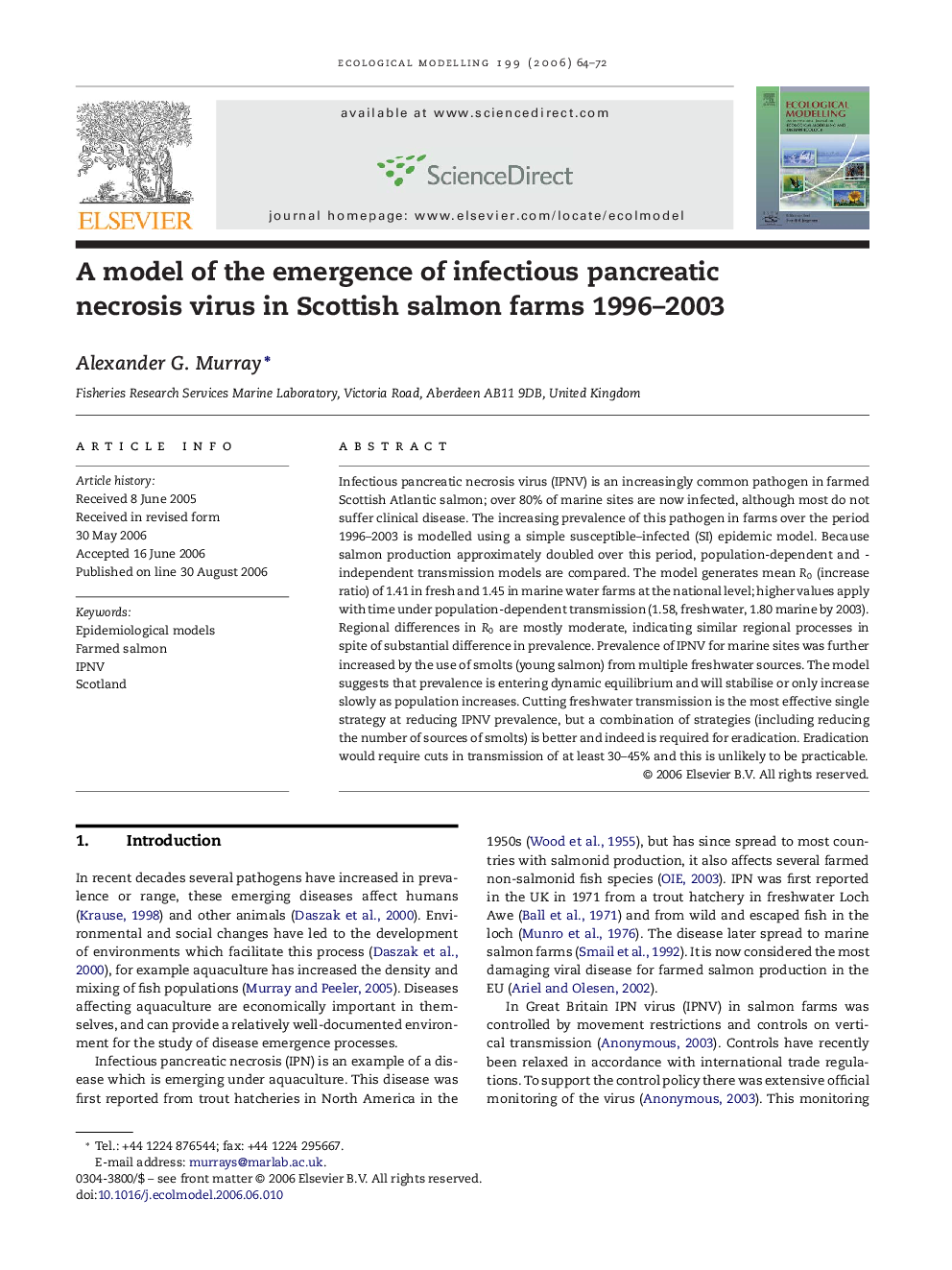| Article ID | Journal | Published Year | Pages | File Type |
|---|---|---|---|---|
| 4379109 | Ecological Modelling | 2006 | 9 Pages |
Abstract
Infectious pancreatic necrosis virus (IPNV) is an increasingly common pathogen in farmed Scottish Atlantic salmon; over 80% of marine sites are now infected, although most do not suffer clinical disease. The increasing prevalence of this pathogen in farms over the period 1996-2003 is modelled using a simple susceptible-infected (SI) epidemic model. Because salmon production approximately doubled over this period, population-dependent and -independent transmission models are compared. The model generates mean R0 (increase ratio) of 1.41 in fresh and 1.45 in marine water farms at the national level; higher values apply with time under population-dependent transmission (1.58, freshwater, 1.80 marine by 2003). Regional differences in R0 are mostly moderate, indicating similar regional processes in spite of substantial difference in prevalence. Prevalence of IPNV for marine sites was further increased by the use of smolts (young salmon) from multiple freshwater sources. The model suggests that prevalence is entering dynamic equilibrium and will stabilise or only increase slowly as population increases. Cutting freshwater transmission is the most effective single strategy at reducing IPNV prevalence, but a combination of strategies (including reducing the number of sources of smolts) is better and indeed is required for eradication. Eradication would require cuts in transmission of at least 30-45% and this is unlikely to be practicable.
Related Topics
Life Sciences
Agricultural and Biological Sciences
Ecology, Evolution, Behavior and Systematics
Authors
Alexander G. Murray,
